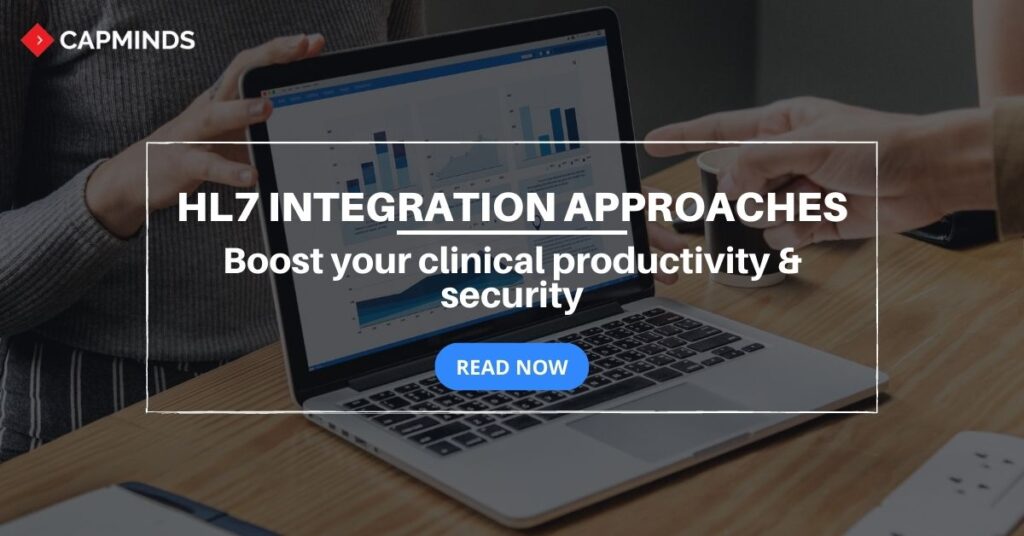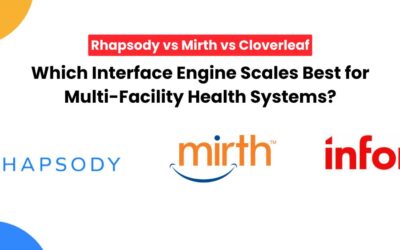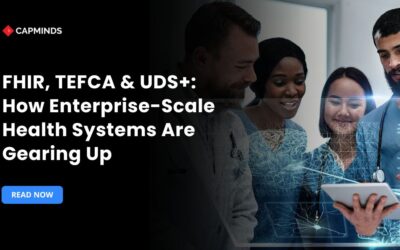Top HL7 Integration Approaches that boosts your Clinical Productivity & Security
The standards provided by HL7 concentrate on the application layer, “layer 7” in the Open Systems Interconnection model (OSI model). This allows healthcare organizations to seamlessly share health information.
HL7 integration is needed for merging and connecting data from isolated pools of different medical systems. HL7 is a vast ocean full of abilities to expand healthcare interoperability in a very standardized way. Today, we concentrate on the two approaches by which HL7 integration can be done in a trouble-less manner.
HL7 Integration Approaches
Approach 1:
An economically available HL7 interface engine arranged in the cloud can be used. It connects with the EMR system of every hospital area. The following are the commonly used HL7 interface engines;
- Orion Health Rhapsody
- Core Health Corepoint
- Healthshare Ensemble
- Infor Cloverleaf
- Mirth Connect
Among the above, Infor Cloverleaf has been the most commonly used interface engine by many hotshot companies in the US healthcare industry. Its per-interface pricing model is way too expensive but it provides long-term stability, scalability, and reliability.
The best open-source variant available is Mirth Connect. Yet, it requires a commercial license for its advanced plug-ins and technical support. It also may need us to use more than one of its plug-ins to increase the speed of development.
Pros
- HL7 interface engine is fresh. Add transforming abilities and filtering for connecting with each EMR system.
- Setup posting REST messages from the systems to the central accumulation server running a RESTful Web Service.
- Development time is shorter on this front. But making sense of the modified data will need configuration.
Cons
- A shorter time of development comes with more configurations.
- Need a heavy-duty cloud server for connections because of larger system source consumption.
- Troubles, as many hospitals/clinics are cautious of interfacing with another HL7 system.
- It may finally cost approximately $20k yearly.
RELATED: Want to know more about HL7 integration & tools? CLICK HERE!
Approach 2:
HL7 APIs can be used on our own to put in place a service that will connect with the EMR system of every hospital area. This light service will be installed and run on a local on-premise system. Then this would sift and send the needed data to us.
Not all HL7 messages will be needed to be processed and transformed. These messages may include the below given HL7 messages;
- ADT – Admit, Discharge, Transfer
- SRM – Schedule Information Unsolicited
- ORU – Observation result (unsolicited)
- SIU – Scheduling Information Unsolicited
- ORM – Order (pharmacy/treatment)
- ORU – Unsolicited Result Message
- PV1 – Patient Visit Information
- MDM – Medical Document Management
It will be easier to implement a custom background service that uses an HL7 API instead of a complete HL7 engine.
Pros
- Can install a small and light service on any on-premise system for each hospital area.
- Requires no cloud service as it can post the modified data to the central accumulation server via a RESTful Web Service.
- The data will be sent by the service over HTTP that sticks to HIPAA compliance standards.
- No yearly software fees of $20k.
Cons
- A long time of development comes with fewer configurations.
- Custom-built software service without a fresh solution.
HL7 Integration Services from CapMinds
CapMinds Technologies offers the perfect all-in-one Interoperability solutions for your clinical needs. Our HL7 integration and FHIR standards services help the innovatory exchange to create new possibilities. Our client-centered services keep them in the limelight. Our clinical integrations have EHR-integrated laboratory, imaging, e-prescriptions, EPCS, pharmacy, and much more. These enhance the activation process for your individual and collective needs.
“CapMinds Technologies is the place that will make you achieve your goals by combining “Expertise+Hardwork+Commitment”.
CapMinds FHIR APIs services cover your health data with the greatest security, privacy, and confidentiality. We update ourselves with the latest versions like HL7 Version 2, Version 3, FHIR, SMART on FHIR, CDA, X12, Mirthconnect, and security standards. CapMinds offers the best HL7 integration and HL7/FHIR interface development services for the federal government, health tech startups, laboratories, clinics, and practices.
“Unite with us to get the greatest benefits of our HL7 integration services and rise to be the first”




